/Dev TFT: Inkborn Fables Learnings
We’ve got about a month left with Inkborn Fables, and it’s time to break out the set-annual (settual? set-ly?) learnings article where we got over just how the set landed, the highs, the lows, and a couple of reflective insights that we are thinking about internally. As always, these are deeper articles, where we strive to show our framework for thinking about making TFT as awesome as possible, so kick back with your favorite cup of tea, and let’s get into the magic making of TFT!
As we enter our 11th learnings article, we’re going to shift how we do these by examining how the set has done as a whole and sharing the set’s successes, learnings, shortcomings, and more. Since this is the first time we’re mixing up the format, we will do our due diligence to respond to all the topics we mentioned in our last Learnings article here.
Set Theme

Starting off light, we’re gonna talk about our Set’s theme with our Art Director. We just went from the hype mixes of Remix Rumble into the chill vibes of Inkborn Fables without skipping a beat; here are some things we’ve learned:
Art: If Remix Rumble was our music set, Inkborn Fables was going to be our art set. Our players love Eastern Fantasy as much as we do, and we have a back catalog of amazing work in this theme from various LoL skinlines and work done during our Fates set. But, in addition to all those existing resources, we wanted to bring in cultural advisors in Eastern art, stories, and culture to imbue Inkborn Fables with an authentic touch that had everything from Encounters to the various scroll-like artworks feeling especially grounded (well as much as possible for their fantastical setting). I’d call out that the Shan Hai Scrolls’ Alternate Universe proved to be a great inspiration for our own world. Not every set is going to require this much research and exploration, but we’re really happy with how Inkborn Fables landed aesthetically.
Original Characters: We’ve made a few TFT exclusive units, but Inkborn Fables marked the first time we’ve made an original character for the broader Runeterran universe. We’re not going to get too deep into this, cause we have a full article on it here, but expect us to continue bringing new characters/skins into TFT that may not have originated from League of Legends.

Okay, now onto the gameplay discussions.
Power Frameworks and Cost Viability
One of the things we struggled with through the early half of the set was getting our power structure correct. At the start of the set, we were seeing people hit three star 2-costs as early as 3-2, and three star 3-costs on 4-1, and since they were far more powerful than two star 4-costs, it was always the correct choice. Playing around 3-cost reroll strategies would also become more powerful with other players rerolling for the same tier of units, but past this, 4-costs at the start of the set were mostly fielded as trait bots, and skipped over for fielding the much more powerful 5-costs.
So we course-corrected, making it harder to hit three star champions as well as increasing the power of 4-costs. This ended up swinging a bit too far the other way, with 4-costs becoming the main way to play the game. Over time we corrected this and got it to a better place, but it still left a sour spot on the set, where it felt like certain cost buckets weren’t viable. If you were a fan of a 3-cost reroll, not being able to play that for a few patches is rough.
Obviously we want champs from every cost bucket to be viable, and players are able to play around the champs they enjoy at any given time. But let me break it down a bit more than that and outline the purpose of each cost and star level.
1-Cost: At two stars these are the champs that stabilize your board in Stage 2 and allow you to win streak. If you’re still playing a two star 1-cost in Stage 3 and on, you’re likely to fall off and you need to upgrade! At three stars, these can start to be viable carries in the end game, but in order to win games, they will need to be paired with their trait capped out and supporting 4 and 5-costs. (Kog’Maw reroll and 7 Mythic is an example of good here)
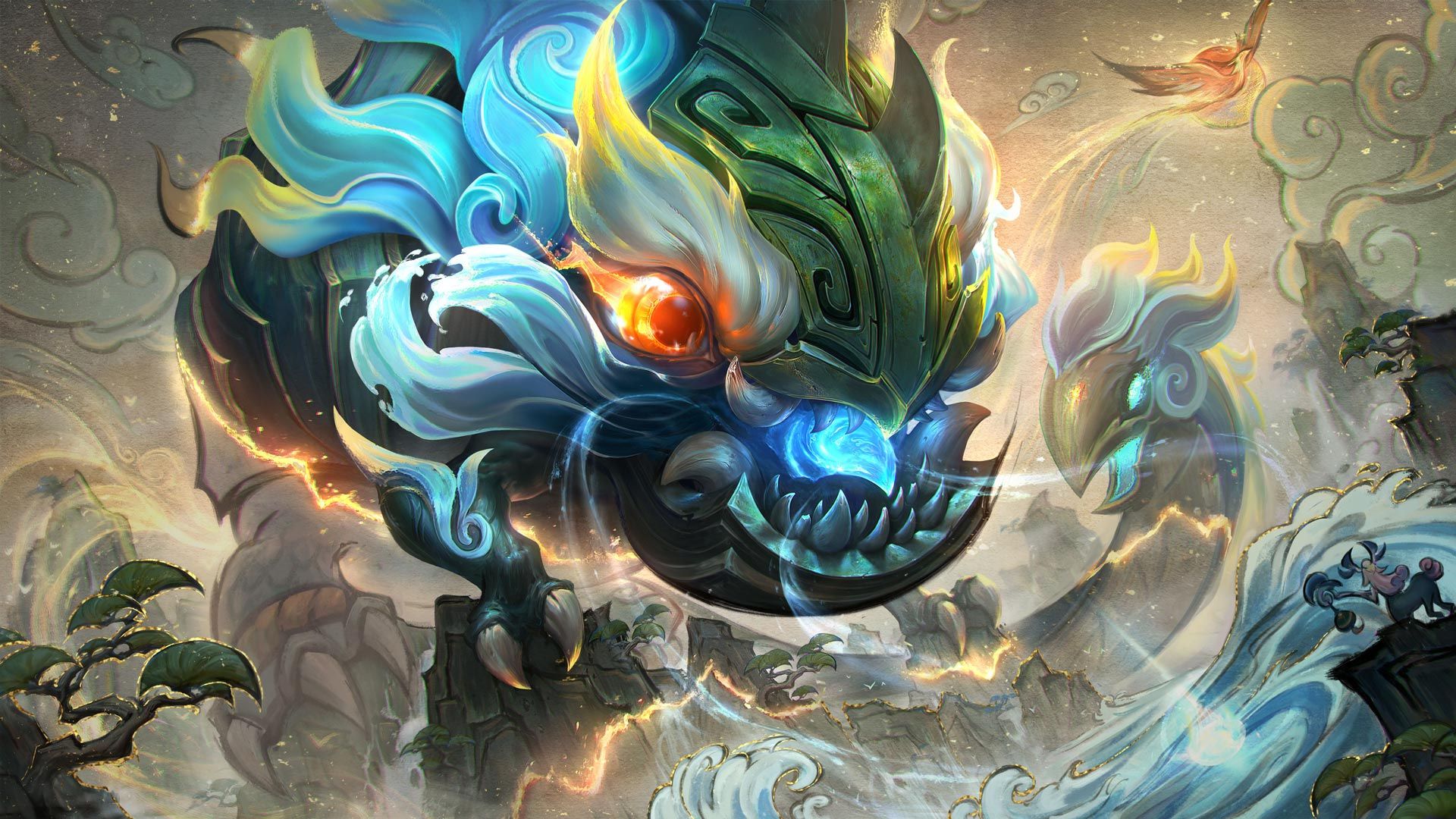
2-Cost: At two stars these are very powerful in Stage 2 and 3, but you likely need to get out of them on Stage 4 as the 4 costs start to come online. Generally swapping a two star 2-cost for a one star 4-cost should be a slight upgrade. At three stars these should be viable end-game carries, on par with two star 4-costs, that require strong set ups to win the game. (6 Dryad Gnar is an example of good here). These should be coming online around 3-5 at the earliest. If they come online before that, we will likely have to reduce their power.
3-Cost: At two stars these should be great midgame carries, allowing you to do very well in Stage 3, and even in Stage 4 with the right setups. Weaker than two stars 4-costs, but stronger than one star 4-costs, with the right setup can even allow you to get to Level 9. At three stars, they should generally be slightly higher cap than a two star 4-cost, but require their traits and powerful support to shine. (6 Umbral Alune three is a good example here) An important thing to note here though is that players should be hitting these later than two star 4-costs. If they are hitting them too early due to too many resources or too high of shop odds (say Stage 4) then we likely have to reduce their power to be on par with two star 4-costs to make up for that.
4-Cost: These are the “primary carries” of TFT, and generally what a lot of comps are designed around having. Most of our vertical origins are centered around a 4-cost, and should be key centerpieces of comps played the standard way. (Fated Syndra, Duelist Lee Sin, and Mythic Lillia are examples of good here). Generally, these come online in Stage 4 and represent the end game.
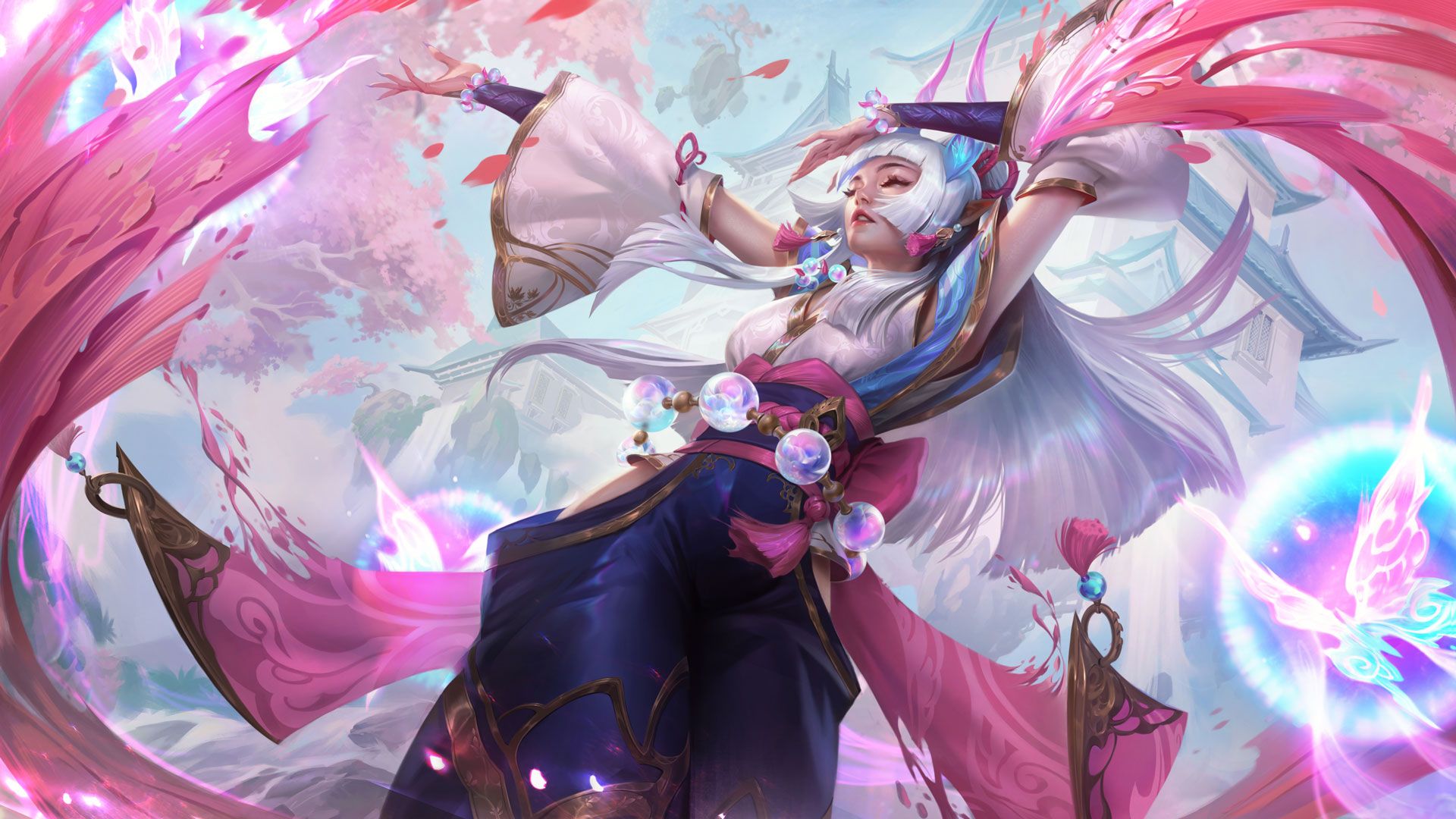
5-Cost: The caps of your comp, meant to be the thing that can separate a 4th from a 1st. These take your comp to their final form. You aren’t meant to play ALL of them, but having more should help your team a lot. Xayah for Trickshot, and Irelia for Duelist are great examples here. It’s also important to have more generalist 5-costs here as well—the sort of “Threat-like” Legendary units. Udyr for his huge HP pool, Wukong for his splash traits (Heavenly, Sage, and he’s pretty Great too), and Hwei for his ability to
printpaint champions (and other things XD)
The big thing moving forward is balancing the accessibility of the reroll comps with their relative power. Too easy to get means they have to be weaker, too hard to get means they aren’t worth the risk. It’s something that we think this set helped us get to a better spot on but will be the center of attention for the balance team as we launch each set. At this point, we think we have the frameworks and systems surrounding these in the correct spot now, which should help make it easier on future sets to find the right spot sooner.
Encounters
Encounters were the main set mechanic for Inkborn Fables. For better or worse, they added a ton of variance to the core experience of TFT, and made every game feel like a unique journey, as you didn’t know what (and who) to expect. This mechanic met the goals, and generally by most of our players, was considered a fun addition to TFT.
Now, we did say most. But certainly not all. For some players, that uncertainty and unpredictability meant that it was harder to really optimize and strategize a game plan. For players who really like to optimize a solid way to play, this created a large feeling of discomfort and potential frustration. Even something as simple as gaining two component Anvils could swing fights if players weren’t in a planned position to take advantage of those. And that’s not even speaking of bigger swingy Encounters like Rakan’s Recombobulate. Generally that lack of control was pretty unappealing to this subset of our players. Some encounters like the Lillia one that moves Augments could also vary wildly from fun to unfun. Having all the Augments appear in Stage 2 is a really cool experience that players enjoy! Having no Augments appear until Stage 4 or later was too close to Stillwater Hold and generally pretty unfun.
Also from a game design perspective, Encounters and their combinations with Portals and Augments have pushed us to the extreme of what we can give out in terms of extra resources like items and gold. A Scuttle Puddle game with an early Tahm Kench encounter and a Prismatic start was a wild experience! We’re pretty set on pushing things back down a bit, as the level of resource inflation that was possible in some of these games hit (or even broke through) the ceiling we want in TFT.
So what’s the takeaway? Well, again, we’re happy with Encounters as a set mechanic in concept. They were novel and unique, and likely what Inkborn Fables will be remembered for. But like any set mechanic, Encounters aren’t something we want to keep around for TFT in the long run. Next set’s mechanic is something very different, so you won’t be seeing Encounters again soon. But they taught us even more about player preferences, and we’re taking that forward to future mechanics and opportunities.
Trait Design
We can’t discuss every trait here, but I did want to cover two key learnings that need to be retained moving forward. The first is specifically Ghostly and Heavenly compared to something like Dragonlord.
In the past, small traits that grant your team power are awesome. They allow you to flex into a small or larger amount of them, and add power to your team. Need some Magic Resistance? Tech in 2 Mystic! Have a spare slot? Add an Altruist for some extra defenses! There’s nothing wrong with having smaller traits that enhance your team, and even having a bunch of them so you can do stuff like Jazz from Remix Rumble, or Stand United builds. This is all great, as it opens up more comp diversity.
However, where this falls apart is when we have a big vertical (defined as a trait that has 6 or more champions in it) with a team-wide buff component, where the primary champions within that trait don’t benefit as much since their potential is lower than someone with a more selfish trait. That’s a lot of words, but the simpler version is when the best carry for a big vertical trait isn’t someone in that trait, we’ve messed up. Ghostly being primarily played around Zyra and Senna is extremely unintuitive for players and leaves champs like Morgana and Kayn feeling much weaker since they can’t easily increase their power. The same is true for Heavenly, which had more Lee Sin carries than Wukong carries. It also makes both of their emblems (which were craftable) pretty unexciting, since it becomes incorrect to put those emblems on a champion, and instead just throw them on a dead unit.
We were able to address this a bit for Heavenly (though not completely; we still mostly saw non-Heavenly champs in vertical Heavenly), but due to the structure of the set, we were completely unable to address it in time for Ghostly. The early/mid-game experience would have been extremely rough for Caitlyn and Aatrox to carry through.
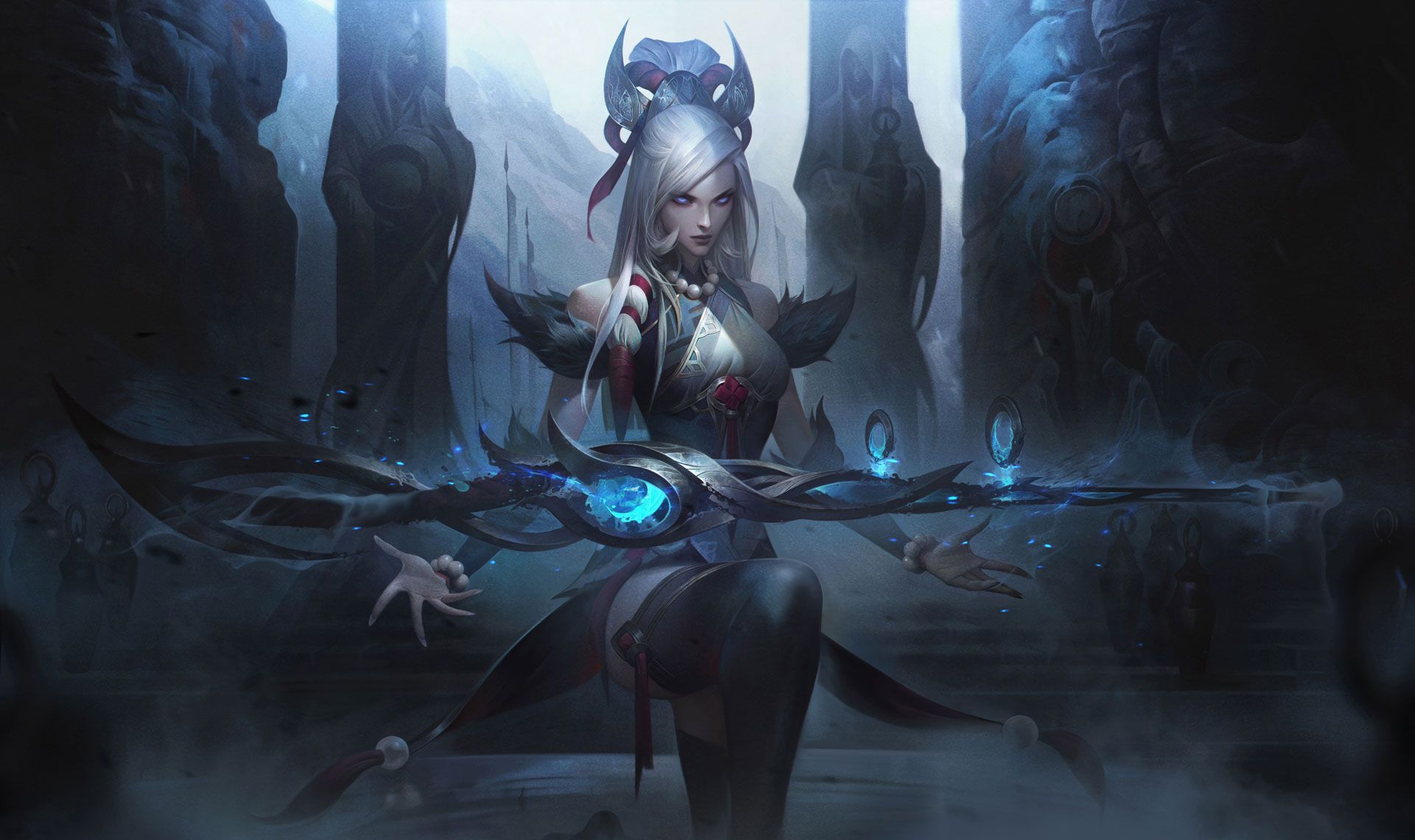
This means that in the future, big vertical traits MUST have primary stars, which usually means selfish amounts of power to the champs within the trait. We will still have smaller team-wide flex traits as well, but this was a key learning from this set.
The second one we should talk about is Exalted. This trait ended up being a lot of fun and made the game especially unique for our deepest engaged players who liked to find ways to sneak the trait in each game. We struggled a bit making 5 Exalted worth it, but otherwise, it was a pretty novel idea. While something like this doesn’t make sense to be in every set of TFT, it added a healthy type of variance to the game in a way that players of all skill levels could enjoy. This is likely something that we could see coming back in the future, especially since we can change the output of the trait (what the trait does) each time, as long as the concept of “a rotating trait” sticks around. So yeah, definitely one of the highlights of Inkborn Fables, and something we’ll revisit someday!
Complexity Ceiling
We’ve talked about this a bit before, but this set helped reinforce this. TFT is at its complexity ceiling. The game shouldn’t really get more complicated than it is now, or it will end up unapproachable. Not just by new players, but even returning players who took a few sets off. Over the next few sets, you’re going to see us make attempts to bring down that complexity ceiling WITHOUT removing the depth or the fun from the game. The depth is especially important to retain, so it’s finding places we can cut unnecessary complexity, while maintaining TFT’s depth.
Let’s use a practical example. If you are playing your first game of TFT in a while on Inkborn Fables, what’s the first thing you see in a new game? You’re immediately shown 3 Portals, and you need to read about what they do, figure out the meaning of that text, and then decide which one you want. Then you see which one is picked and immediately start strategizing based on that. It’s a LOT for a first-time player.
So this is an area we think we can do better. It won’t be ready for the next set, but we foresee a future where sets do not have Portals as you know them since we think we can capture the fun aspects of the current Portals in a way that doesn’t overwhelm new and returning players. I can’t tip our hand just yet, but this is an example of one area we can improve. We have a few others in store for the future as well but wanted to point out this as a big area of focus for us. Expect to see us challenging even the most core of designs in pursuit of this. Speaking of complexity, let’s move on to a topic that goes hand and hand with it.
Champion Intuitiveness
We talked about this briefly in the last learnings article, but it’s worth covering again since Inkborn Fables had some good and not-so-good examples. It’s really important that players be able to look at a champion, and quickly grok what they should do. We look at Cho’Gath and think “Oh that’s a big guy, he probably goes up front and tanks” and are generally right. This also helps our game be learnable and approachable (which we just talked about!)
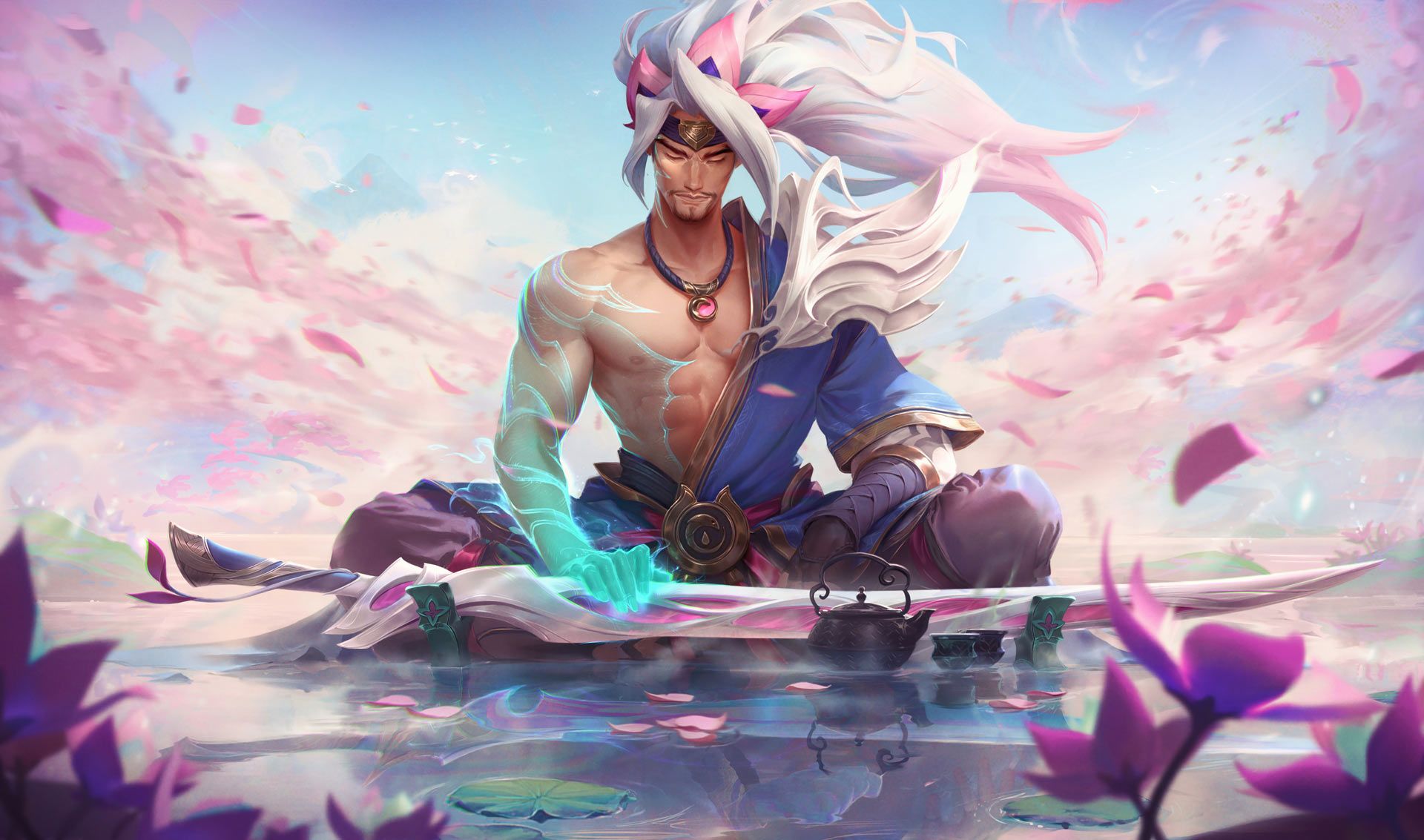
There were some rough examples in this set for sure. Yasuo as a tank is one that really forces you to squint a bit, as he is typically a damage dealer, and the fantasy of a lone warrior samurai isn’t something you’d expect to slam Gargoyle Stoneplate on. Aatrox and Riven were also both champions that didn’t really work out in this respect. They were both designed as damage dealers, but their spells, tuning, and design made them often considered generic front liners as opposed to exciting carry champions.
On the flip side though, in the right spot and if executed correctly, pushing champions into a unique output can have positive results that can highlight a champion's core fantasy and create a new experience for TFT fans. Irelia is the best example here, as she is typically a melee carry or tank in TFT, but this time we leaned into her blade dancing fantasy and had her act as a backline damage dealer. The 5 and 4-cost spaces allow us more room to be interpretive with the champion, but this only works if it fits their theme and mechanics.

To that end, internally we created a “Champion Roles” framework that will help ensure that our set teams are leaning into the expected fantasies and roles that players will expect. From there, if we deviate, it will likely be in those late-game champions. As a reminder, this framework is being applied to future sets, but not right away (part of the tradeoff of us developing more sets). So keep your eyes peeled for a couple unique champs, like a certain magic user who scales with Attack Speed, in the next set that may behave in ways you don’t expect. And, as always, be sure to let us know how that feels.
High Risk Traits
High Risk traits are something that it feels like we talk about in every one of these articles because they’re just so fun. But they are also pretty tough to design and keep reinventing, and at their core, almost all of them so far have been a variation of “Trade Health for resources”. Heartsteel in Remix Rumble was a unique version of this style of trait that was generally successful, but also at the highest level was often too strong relative to other traits. And it turns out playing strong traits is fun!
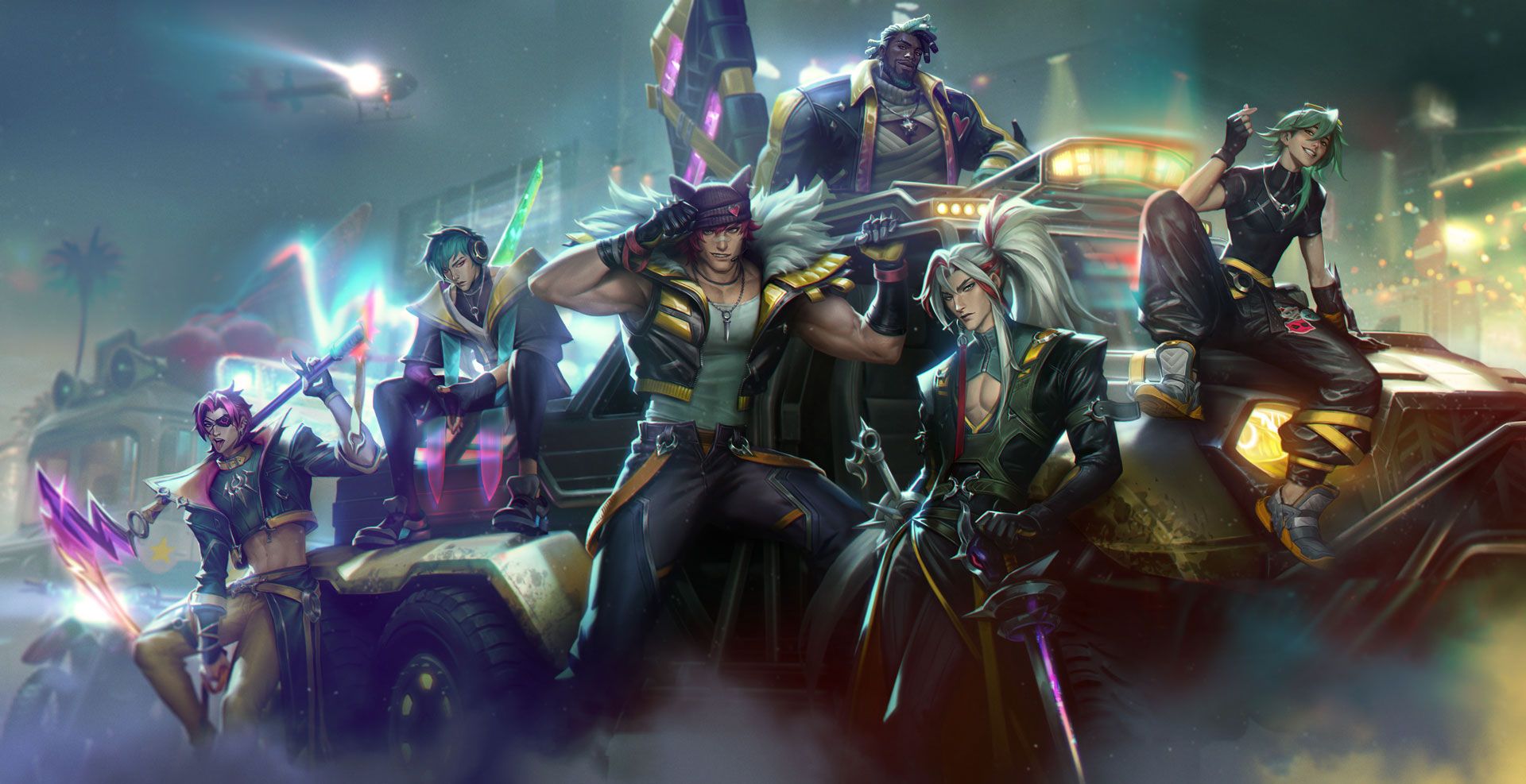
Inkborn Fables’ Fortune on the other hand actually ended up almost perfectly balanced at the highest levels of play, and the dice roll was a unique twist that added more risk. The problem is being balanced at the highest levels of play generally meant for 99.5% of our audience, it was too weak and difficult to play, leading to it being less fun. Even if it’s balanced, trading 70 player health for 4 anvils wasn’t exciting enough, especially compared to past high risk traits.
And therein lies the challenge. These traits need to be exciting but also fair, and that line is razor-thin. Combined with having to redesign and make new versions of each set, it’s quite the design challenge. So for the next set, and sets past this one, we’re thinking about other ways to provide the same high risk to reward feeling, but maybe not from the Trait system…You could call our experiments here a bit high risk, but we think we’ll be happy with the cash out (I’ll show myself out).
Hero Augments
In Monster’s Attack, the set mechanic was Hero Augments, and every game players were forced to choose a Hero Augment of a random cost. This mechanic was fine, but having a Hero Augment every game kind of ruined the novelty. In addition, carry champions’ Hero Augments were usually “Carry harder,” which wasn’t really that interesting.
However, we kept some of the learnings of Hero Augments and applied them to our last few sets, and that has ended up being wildly successful, with players deeply enjoying these Augments. Even when the Augments are weak, players are always excited about a new opportunity to turn tank champions into a new unique carry champ. Seeing a Shen doing true damage from afar, or a Neeko doing a map-wide AOE and healing back up, are generally considered very fun and players LOVE picking these Augments.
We want to keep doing this each set, as they are a nice addition to the Augment space. However, there are a couple of key learnings from this set we need to take forward. First, when Hero Augments are too strong, they’re insanely frustrating, and it's a quick way to kill the novelty. Seeing someone make a Yorick perform well when the Augment is sitting at a 4.5 (placement) average is awesome and makes you go wow! Seeing another Storied Champion Garen when it’s averaging a 3.9 makes you dread the rest of the game. So these are extra critical to be at the right balance state.
Next, there’s nothing more frustrating than seeing a Hero Augment you’re excited to play, picking it, and being pumped up, only to realize that someone else in the lobby has also taken the same one. You immediately feel like you’re at a disadvantage since you’re contested, but there really isn’t another option to pivot to something else. This isn’t the kind of experience we want people to have, so we’re actively investigating ways to make sure this doesn’t happen. Again, this requires tight balance, so we don’t have “Whoever rolls uncontested Storied Champion has a large advantage”, but we think we can get there and will be worth it for a better experience.
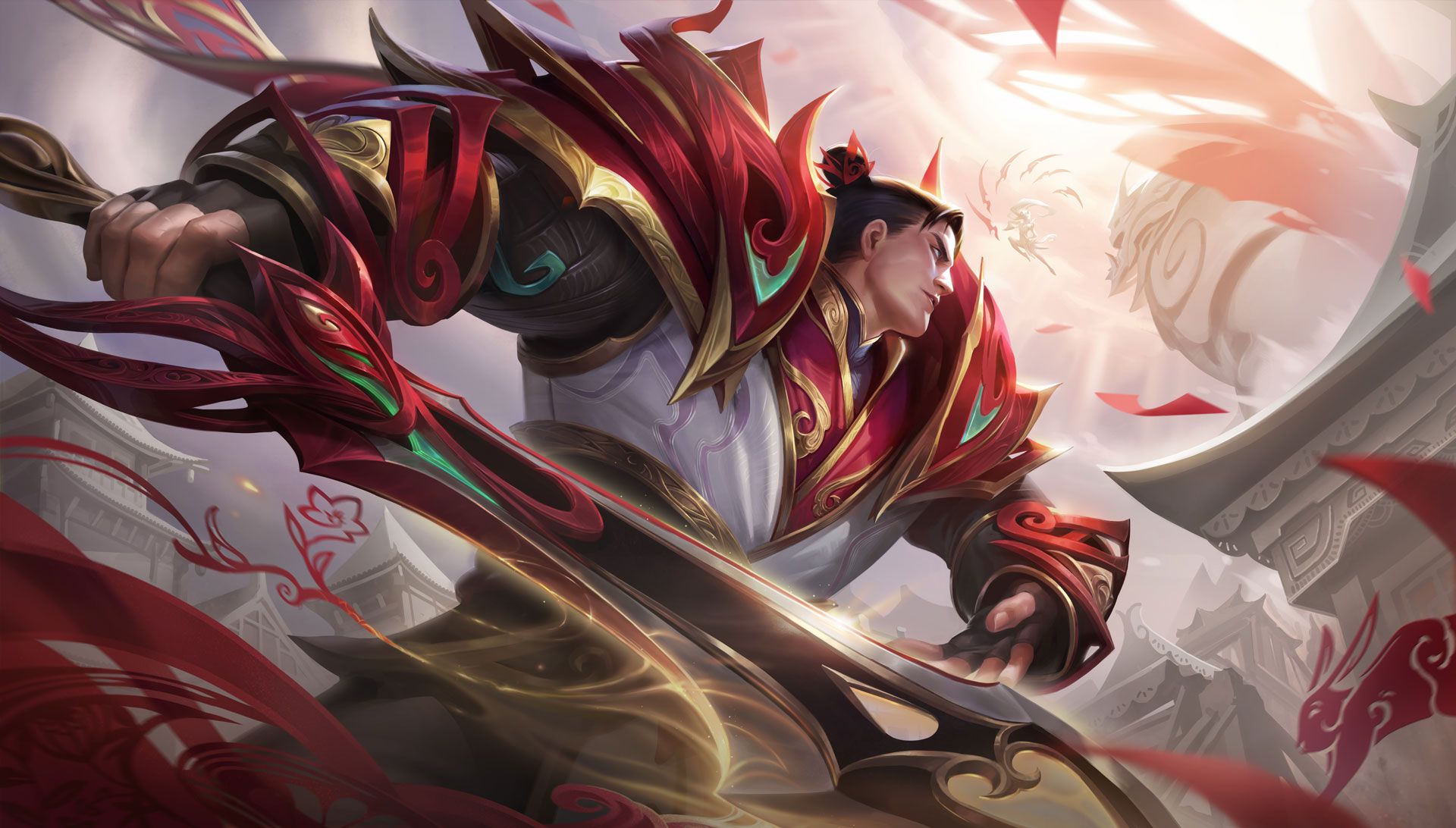
Look forward to more hero augments in our next set as well. They’re pretty similar to Inkborn Fables (low-cost tanks that become carries), but the team cooked up some fun ones. There are ones that feel pretty unique, and at least one that will give you a sense of Deja Vu.
Artifacts
As promised, we released 20 new Artifacts a bit into the set. These items were released with the goal of adding more unique outputs that the base item system can’t really support. Other than a few minor hiccups (Talisman released too strong, Trench Coat had a few bugs) the release was successful. Lots of new unique outputs get opened up, and create new dreams for players, which lead to more possible compositions. Personally I loved playing Horizon Focus Rek'sai reroll and showed that off many times! We also saw Forbidden Idol Tahm Kench, Blighting Jewel Teemo, Wits End Bard, and many more!
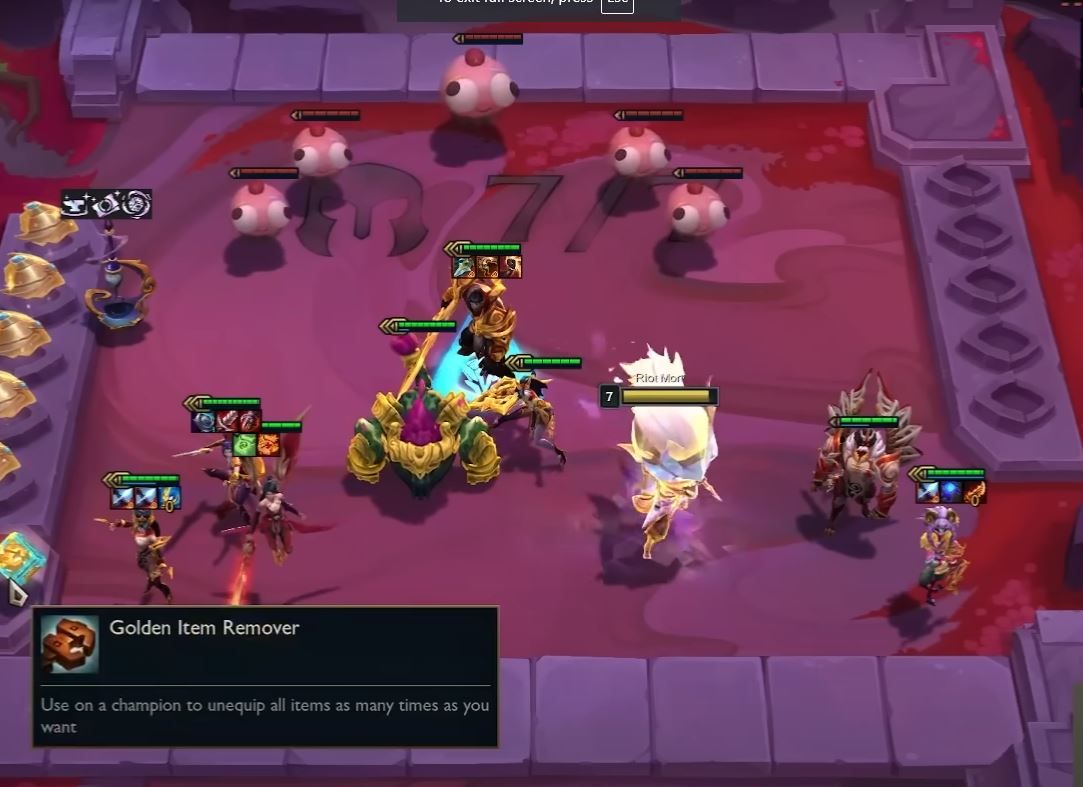
It will be exciting to see how the artifacts get played around in the next set, as people figure out which champions can utilize which ones the best. Who is going to be the best Corrupted Vamp Scepter user? They add a new level of depth to the set that allows people to show even more mastery of understanding of how the game works.
That being said, we may continue to explore how often players have access to these. Too often, and it’s too easy to create these powerful situations (we had to remove the Trash to Treasure Augment because of this), but not often enough and they don’t feel like a part of the game that you can really learn. Over time we may also rotate some of the Artifacts that aren’t really exciting or working as we find more spaces to explore. Either way, this was a pretty big win for TFT in the long run!
11 Learnings articles later, and there’s still so much to do! We’re constantly reflecting on how TFT lands with all of you, and we hope sharing these internal conversations and discussion topics shows that. Time’s short, so we’ve gotta run for now, but we’ll have something sweet to share with our next set’s release announcement, so until then, stay frosty, and take it easy!